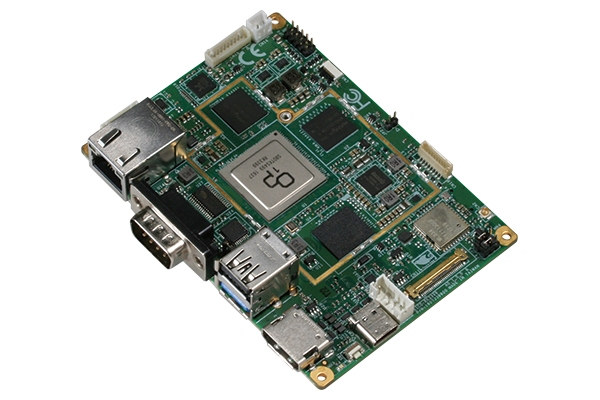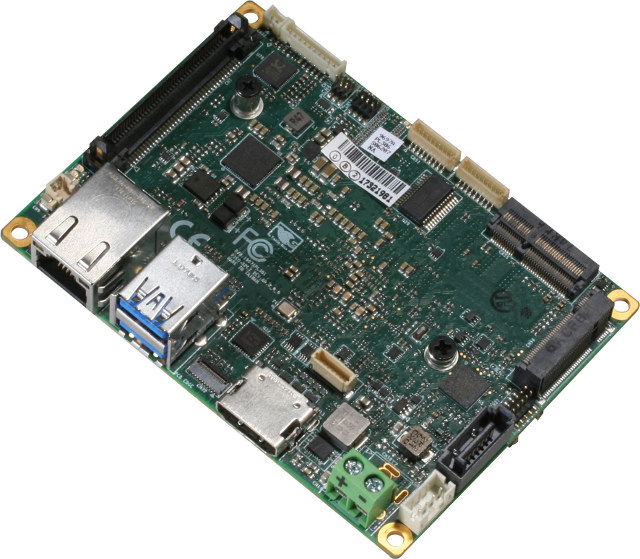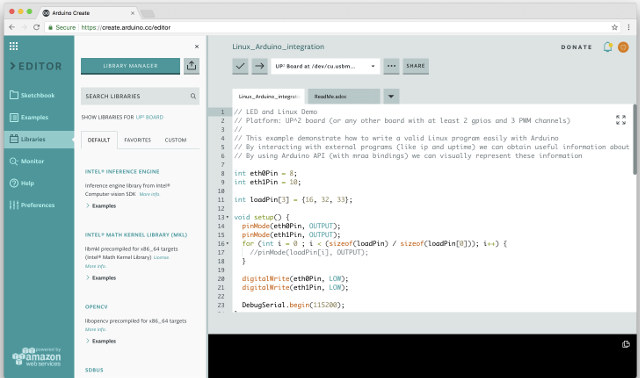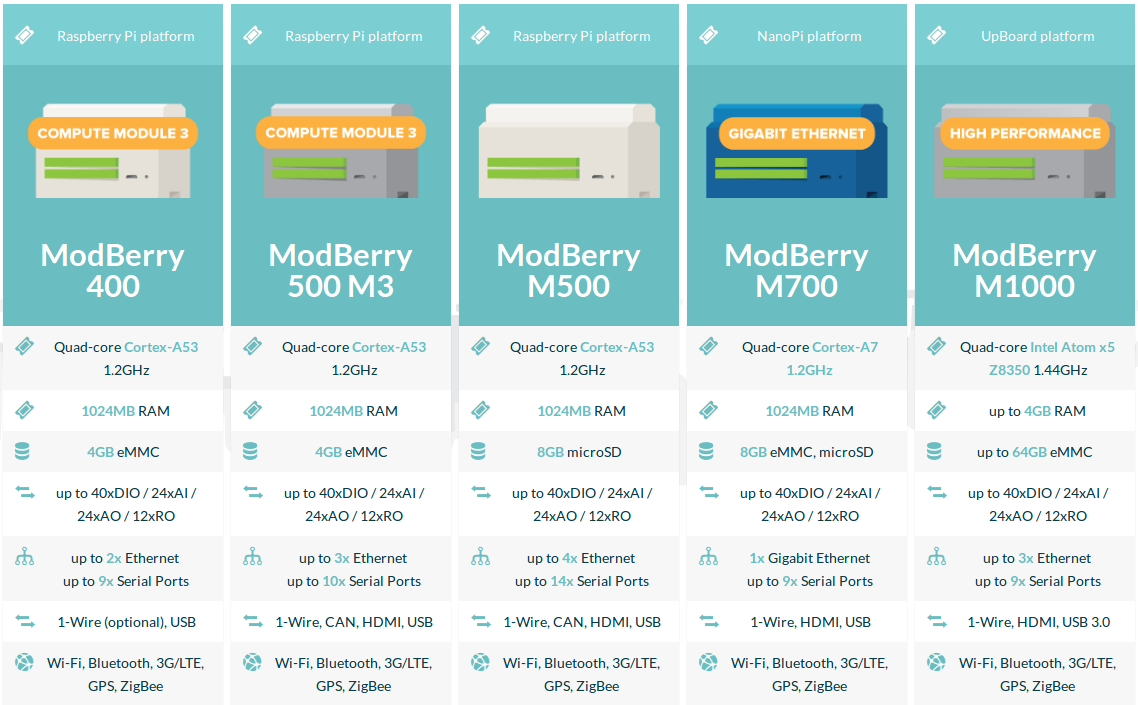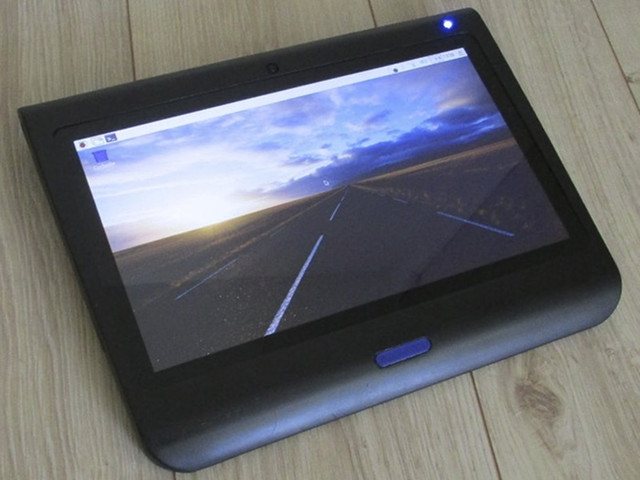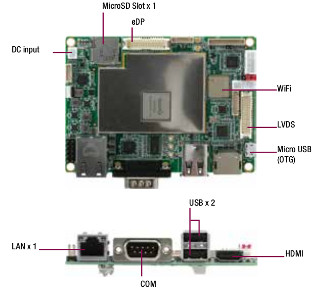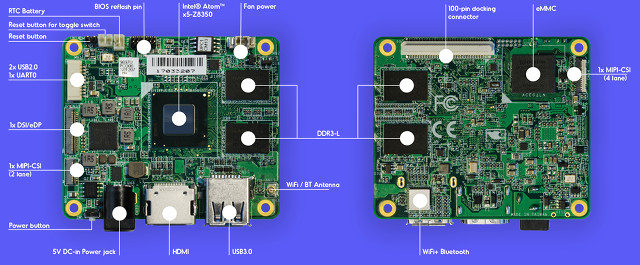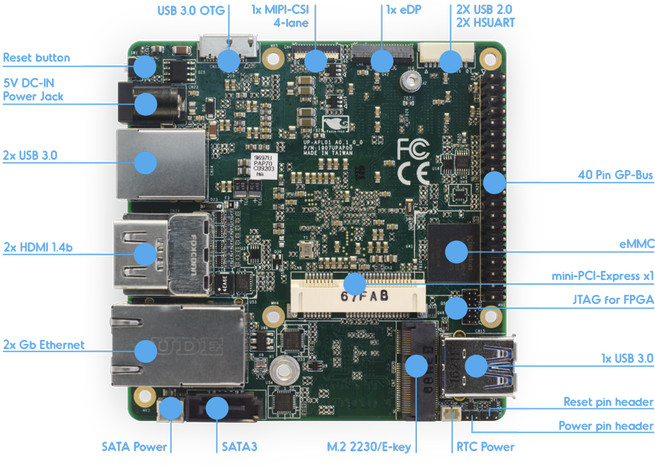We now have a fair amount of boards powered by Rockchip RK3399 hexa-core processor with Firefly-RK3399, Rockchip Sapphire, VideoStrong VS-RD-RK3399, the upcoming 96boards compliant Rock960, among others. But AFAIK, none of those are designed to fit in a standard enclosure. AAEON will soon change that with an update of their RICO-3288 pico-ITX board, called RICO-RK3399 featuring Rockchip OP1/RK3399 processor combined with 2GB RAM, 16GB eMMC flash, HDMI 2.0, Gigabit Ethernet and more. AAEON RICO-3399 specifications: SoC – Rockchip RK3399 (OP1) hexa-core processor with two Cortex A72 cores up to 1.8 GHz, four Cortex A53 cores, and an Arm Mali-T860MP4 GPU System Memory – 2GB LPDDR3 Storage – 16GB eMMC flash, micro SD card slot Video Output / Display HDMI 2.0 port up to 4K UHD @ 60Hz eDP connector for LCD display up to 4K UHD @ 60 Hz I2C/USB header for touch panel Audio – Via HDMI, 2.5W (by 4Ω) speaker/ […]
PICO-APL3 Apollo Lake Pico-ITX Board Comes with an Optional TPM 2.0 Module
AAEON has launched another industrial Pico-ITX board powered by Intel Celeron/Pentium Apollo Lake processors with their PICO-APL3 Pico-ITX single board computer featuring either Celeron N3350 or Pentium N4200 processor together with 2 to 4GB soldered DDR3L memory, and 16 to 64 GB eMMC flash. The company explains that one of key differences against other similar board is the option for a TPM module / hardware security that would allow applications such as payment processing for retailers or on the go. AAEON PICO-APL3 board specifications: SoC Intel Celeron N3350 dual core Apollo Lake processor @ up to 1.10/2.40GHz with 12EU Intel HD Graphics 500; 6W TDP Intel Pentium N4200 quad core Apollo Lake processor @ up to 1.10/2.50GHz with 18 EU Intel HD Graphics 505; 6W TDP System Memory – 2GB DDR3L on-board (Option to 4GB) Storage – 16GB eMMC flash (32/64 GB as option), 1x SATA III port (5V/12V power), […]
Arduino Create Adds Support for Linux Development Boards (based on Intel processors for now)
Most people are used to program Arduino compatible boards with the Arduino IDE that they’ve installed in their Windows/Linux/Mac OS computer, and manage everything locally. But Arduino introduced Arduino Create last year, which includes Arduino Web Editor allowing you to perform the same tasks in your web browser, and save your files in the cloud. The company has now added Linux support to Arduino Create so that users can now program their Linux devices as if they were regular Arduino boards, and easily deploy IoT applications with integrated cloud services. The initial release has been sponsored by Intel, and currently supports X86/X86_64 boards, but other hardware architectures will be supported in the coming month. In the meantime, AAEON UP2 board is the best platform to get started, as a complete getting started guide is available for the platform. But other mini PCs such as Intel NUC, Dell Wyse, Gigabyte GB-BXT are […]
ModBerry Industrial Automation Controllers Leverage Raspberry Pi, FriendlyELEC, and AAEON Boards and Modules
TECHBASE’s ModBerry Linux based industrial controllers have been around since 2014 with their first model being ModBerry 500 powered by a Raspberry Pi compute module. Over the years, the company has kept adding new ModBerry controllers with now an interesting choice of Raspberry Pi 3 board or compute module, FriendlyELEC’s NanoPi M1 Plus board, or Intel Atom x5 based AAEON’s UP board. All programmable automation controllers (PAC) runs Linux 4.0 or greater, with Debian or Ubuntu Core rootfs including ready tools and pre-compiled packs including C/C++, JAVA, SQL, PHP, SSH, and VPN support. The firmware is upgradeable over the air, and the controllers can run the company’s iMod control software and interface with iModCloud cloud computing service for telemetry, remote control and data sharing. Typical uses include C-L-V functions with conversion to collect and transmit data over communication interfaces, logging via iModCloud or a SCADA, and visualization via a web […]
Diskio Pi 13.3″ Touch Panel Display Kit is Designed for Raspberry Pi and ODROID Boards (Crowdfunding)
If your project requires a touch panel, there are plenty of solutions for Raspberry Pi and ODROID boards, with Hardkernel even selling ODROID-VU8C fully integrated touch panel display. However, most display kits require you to make your own case, and feature smaller displays with lower resolution. One developer has however come up with Diskio Pi, a higher-end touch panel kit with a 13.3″ Full HD display that works with the most popular Raspberry Pi and ODROID boards. Diskio Pi specifications: Display – 13.3″ AUO TFT IPS display with 1920×1080 resolution connected via a 30-pin eDP connector ; 330 cd/m2 brightness; 85° viewing angles in all directions. Touch panel – 10-point capacitive touch; G/G structure; USB 2.0 interface; ≥6H surface hardness. Main board: HDMI to eDP driver Stereo sound amplifier USB 2.0 hub with 3x ports: 2x external + 1x internal Battery balance circuit (3S/3S2P) Expansion – Various headers for prototyping […]
AAEON RICO-3288 Pico-ITX Board is Powered by Rockchip RK3288 Processor
When Rockchip RK3288 was launched in 2014 we got a few development boards like Firefly-RK3288, PopMetal, and Radxa Rock 2, and later on MiQi board. ASUS Tinker board made the processor popular again in 2017, and now AAEON, an industrial embedded company of ASUS group, has just unveiled RICO-3288 Pico-ITX Board based on the processor, and targeting OEMs instead of hobbyists & makers. RICO-3288 board specifications with RICO-3288F & RICO-3288V models adding wireless connectivity & battery options, as well as CAN and an extra RS-232 port for for the latter: SoC – Rockchip RK3288 quad core Cortex A17 processor @ 1.8GHz with ARM Mali-T760 GPU System Memory – 2GB DDR3L RAM Storage – 16GB eMMC flash, micro SD slot up to 64GB Video Output / Display IF mini HDMI 2.0 up to 4Kx2K @ 60Hz (Note that 4K @ 60 Hz may not work with all HDMI 2.0 TVs). eDP […]
UP Core is a Low Cost & Compact Intel Maker Board Powered by an Atom x5-Z8350 SoC (Crowdfunding)
The UP community has already launched Intel Cherry Trail and Apollo Lake boards in the past with UP Board and UP2 (squared) boards, and they are now about to launch a cheaper and smaller board called UP Core powered by Intel Atom x5-Z8350 processor with to 1 to 4GB memory, up to 64GB eMMC flash, HDMI, USB 3.0, … and I/O expansion connectors. UP Core specifications: SoC – Intel Atom x5-Z8350 “Cherry Trail” quad core processor @ 1.44 GHz / 1.92 GHz (Burst frequency) with Intel HD 400 graphics @ 200 / 500 MHz System Memory – 1, 2 or 4 GB DDR3L-1600 (soldered on board) Storage – 16, 32, or 64 GB eMMC flash, SPI flash ROM Video Output / Display – HDMI 1.4 port, full eDP (embedded DisplayPort) connector Audio I/O – Via HDMI, and I2S Connectivity – 802.11 b/g/n WiFi @ 2.4 GHz, Bluetooth 4.0 LE (AP614A) […]
UP Squared Apollo Lake Development Board Comes with Up to 8GB RAM, 128 GB Storage for 89 Euros and Up (Crowdfunding)
AAEON Introduced a Intel Atom X5 based Raspberry Pi-like development board named “UP Board” last year that sold for as low as 89 Euros via a Kickstarter campaign. The company is now back with the first Apollo Lake development board for makers I’ve seen so far, powered by either a dual core Celeron N3350 or a quad core Pentium N4200 processor, featuring an Altera MAX 10 FPGA, and called UP2 (“UP Squared”). There are six variants of UP Squared board sharing most of the same technical specifications: SoC Intel Celeron N3350 dual core “Apollo Lake” processor @ 1.1 GHz / 2.4 GHz with 12 EU Intel HD graphics 500 @ 200 MHz / 650 MHz (6W TDP) Intel Pentium N4200 quad core “Apollo Lake” processor @ 1.1 GHz / 2.5 GHz with 18 EU Intel HD graphics 505 @ 200 MHz / 750 MHz (6W TDP) FPGA – Altera Max […]


